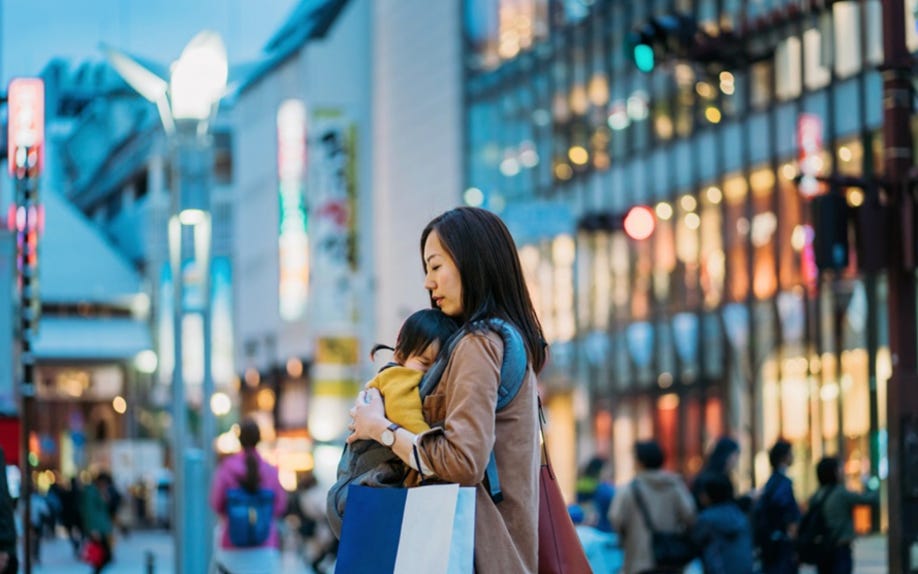Double 11 First Results: Austin Li’s livestream gained 450 million viewership; 34% of Consumers Plan to Reduce Spending
Main topics of today:
Double 11 news: Austin Li’s Livestream gained over 450 million viewership; Pre-Sales First Results; 34% of Consumers Plan to Reduce Spending
Chinese “YouTube” Officially Launched eCommerce Livestream for Upcoming Double 11 Shopping Festival
Icebreaker between Two Internet Giants: WeChat Ads can now Jump to Tmall
EssilorLuxottica, the Sunglasses Company Behind Chanel and Prada, Reported 23% Revenue Growth in APAC Q3
Coach to Open Stores in Baoji Betting on Lower-tier Cities; LV Launches the First Restaurant in Chengdu
Note: the format of this newsletter is heavily inspired by Bill Bishop's wonderful Sinocism newsletter. I highly recommend it for the highest quality news about China.
1. Double 11 news: Austin Li’s livestream gained 450 million viewership; Pre-Sales First Results; 34% of Consumers Plan to Reduce Spending according to Bain
Double 11 is the world's biggest shopping festival. The GMV (Gross Merchandizing Value), including all online platforms, reached 952 billion CNY (~136 billion USD) last year. Looking at 2022, the 618 Mid Year Sales GMV only grew by 1% to 583 billion CNY, and Double 11 GMV will likely follow with a one-digit growth, if not a decline.
Tmall's Double 11 Pre-sale started on October 24th, and Taobao Livestream is on fire. More than 450 million people viewed the Livestream of "King of Lipsticks" Austin Li, doubling the figure from last year. The No.2 Livestreamer was Luo Yonghao, a top tech influencer and Livestreamer. He was quite active on Douyin, and just had his debut live stream on Taobao, which attracted 26 million viewers. Unlike Austin Li's focus on cosmetics and beauty brands, Luo Yonghao caters to consumer electronics, sportswear, food & beverage, etc.
According to the 4-hour pre-sale results from Tmall Double 11, beauty & skincare is still the vertical that moves the most revenue. The 2 top cosmetics brands (L'Oréal and Estée Lauder) have reached 1 billion CNY in estimated sales. Due to the fierce competition in the sector, beauty brands have to offer the best price to top Livestreamers and expect an "economy of scale."
As “dynamic zero” COVID policy prevails, economy shocks, and consumer confidence drops, brands need to be more cautious in finding a balance between short-term promotion activities and long-term brand building. Consumer loyalty needs to be the future focus.
Bain & Company surveyed nearly 3,000 consumers from different cities in China to capture the trends of this year's Double 11. Among the respondents who participated in last year's Double 11 and planned to continue participating this year, 34% of consumers plan to reduce their total online and offline spending during this year's Double 11; only 24% of respondents indicated that they would increase consumer spending. In addition, 69% of the respondents plan to shop on three or more platforms during the Double 11.
2. Chinese “YouTube” Launched eCommerce Livestream for Upcoming Double 11 Shopping Festival
Yet another Chinese social platform joins the eCommerce live streaming battlefield. Bilibili, the Chinese "equivalent" of Y” is pushing its commercialization right before Double 11. Bilibili Livestreamers can link to 3rd parties eCommerce marketplaces such as Taobao, Tmall, and JD to drive traffic there - looks like Douyin or Kuaishou at its very early stage. However, the conversion capacity of Bilibili live streamers is questionable. The platform is 82% Gen-Z, and most live streamings are focused on gaming, entertainment, anime & comics, etc., making it harder for general retail brands to drive sales. Bilibili still has a long way to go in exploring how to improve its revenue growth while maintaining the community culture of the platform.
From the perspective of price alone, Bilibili does not have an advantage. Since most of the products come from third-party platforms, Bilibili has no say in the price of products. Even if the Livestreamer offers coupons or discounts, some products are still more expensive than other e-commerce platforms.
Bilibili's 2022 Second Quarter Results Report (Bilibili Official, CN)
Value-added services: Revenue from value-added services was RMB2,103.5 million (US$314.0 million), an increase of 29% compared to the same period in 2021, mainly due to the Company's enhanced commercialization capabilities, and the Company's value-added services including premium membership, live streaming services and other The number of paying users of value-added services has increased.
3. Icebreaker between Two Internet Giants: WeChat Ads Now Can Jump to Tmall
WeChat and Taobao/Tmall have been literally "banning" each other for the past nine years. WeChat users had to copy a "code" to open the products on Taobao, and it was impossible to drive WeChat traffic to Tmall directly through advertising. However, the game has been changing since last September, when Chinese authorities pushed the internet giants to stop blocking each other's URL links. Now, international brands can do WeChat Ads to drive traffic directly to Tmall Flagship Store, although there are some extra steps to enable data sharing between two platforms. Both WeChat and Taobao/Tmall have reached a growth bottleneck, so it makes sense to join hands and cope with the challenge from Douyin and Pinduoduo. Chinese Internet giants have been blocking each other, increasing the cost of performance marketing and advertising. We will see if this first step leads to more opening-ups and collaborations.
WeChat, which has 1.3 billion active users, is crucial for Alibaba, whose traffic has reached a bottleneck. Pinduoduo could compete with Taobao just by relying on WeChat'sWeChat's traffic support. If WeChat continues to block Taobao and support Taobao's competitors, JD.com and Pinduoduo, then Alibaba'sAlibaba's situation will become more and more difficult.
Tmall Store can advertise in WeChat Moments, but will it only be "temporary"? (36Kr, CN)
If WeChat can obtain more user data from the Taobao platform, then WeChat Moments Ads targeting can also be more accurate. As Dai Shan, president of Alibaba's Domestic Digital Business sector explained, "Helping merchants to improve the efficiency of Uni Marketing operations is a critical job this year."
4. EssilorLuxottica, the Sunglasses Company Behind Chanel and Prada, Reported 23% Revenue Growth in APAC area in Q3
Relying on the strong rebound of the APAC market, the sales of glasses giant EssilorLuxottica grew by 17.0% to 6.4 billion euros in Q3. The Asia-Pacific market recorded a year-on-year increase of 31.7% to 761 million euros, or a 22.7% growth at current exchange rates, much higher than the 8.2% average.
EssilorLuxottica is the world's largest eyewear manufacturer with well-known sunglasses brands such as Ray-Ban and Oakley. They also have exclusive manufacturing and licensing deals with designer labels such as Burberry, Prada, Chanel, Miu Miu, Versace, etc., making the group more resistant to inflation.
Despite concern that the luxury market might cool down, Hermès said there was no such sign so far and just announced a global price increase in 2023 (same as Louis Vuitton did earlier this year). Despite challenging situations, the luxury market in Mainland China maintained high double-digit growth in 2021, with some brands growing at a rate of over 70%, also because people turn to inbound luxury consumption as overseas traveling is still restricted.
Ray-Ban maker EssilorLuxottica's sales rise as Asia-Pacific rebounds (Reuters, EN)
While EssilorLuxottica's broad consumer base in the United States and Europe exposes it to macro pressures in those regions, it is more insulated from inflation than peers in the discount eyewear business thanks to its luxury licences, Bernstein analyst Luca Solca said.
Bain & Company releases 2021 China Luxury Market Report (Bain & Company)
From a global perspective, in 2021, the Chinese market accounts for about 21% of the total global luxury consumption, up from about 20% in 2020. We expect this growth trend to continue, regardless of the future recovery of outbound travel. By 2025, the Chinese market is expected to become the world's largest luxury market.
5. Coach to Open Stores in Baoji Betting on Lower-tier Cities; LV Launches the First Restaurant in Chengdu
When many brands shut down poor functioning stores in lower-tier cities, Coach decided to do the opposite - they would open a store in Baoji, a 4th-tier industrial city in northwest China, pretty much unknown to non-Chinese people. The store is one of 30 in China that Coach’s parent company Tapestry is looking to open in the coming 12 months. The decision seems unusual but is actually smart - the mega metropolitan cities are saturated with well-established luxury labels like Louis Vuitton, Gucci, and Hermès, and it's hard for "accessible luxury" brands like Coach to penetrate up to these markets. Lower-tier cities have been left pretty much unattended due to a lack of luxury shopping malls and concerns over people's disposable income and luxury spending.
Coach is not the only one looking away from top-tier cities. For example, Louis Vuitton chose Chengdu to open its first restaurant in China instead of Shanghai, Beijing, or Shenzhen. Chengdu is also beloved by many for its rich gastronomy, well-preserved local culture, and lovely pandas. It's a clever way to build localized, emotional connections with Chinese consumers by leaning into their feeling for national and cultural identity.
Tapestry deepens push into China, undeterred by luxury market slump (Reuters, EN)
“A lot of our existing customers are already from tier-three, tier-four cities, so we believe there is a cluster there that will get us scale. We never want to be exclusive or selective, we want to be close to where our customers are,” said the company’s Asia Pacific president Yann Bozec.
The first domestic LV restaurant will be located in Chengdu (Sohu, CN)
The location incorporates giant panda elements into the overall design. There is a large panda sculpture in the decorative area on the left side of the main entrance, and the soles of the feet are printed with LV classic old flower patterns. Also, LV used the season as a marketing point, launching a new autumn installation with red balloons and colorful pandas.
Currently, the title of "LV's first restaurant in China" has attracted many consumers. Some said that the per capita consumption of LV restaurants is 3,000 CNY (~416 USD), and the restaurant has been fully reserved for the upcoming half year.






